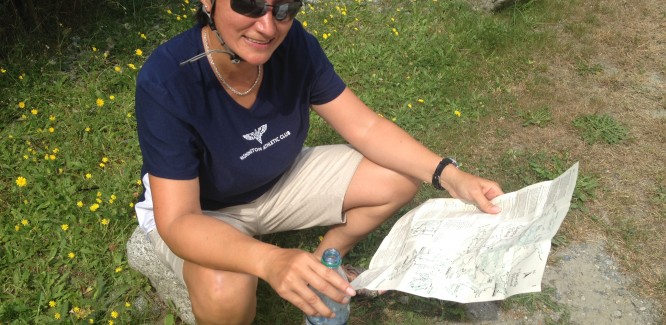
7 Selling Tips from the Sea – Part 2: Plan Meticulously
One of the reasons why my first 14 day and night excursion on the sea was such a success, was because it was planned – right down to where we sailed and what we ate, well in advance. Now, I am not saying that there was no room for spontaneity. On the contrary, there was lots of room for a contingency plan, just in case our sense of adventure took us in another direction. My captain, shown here in the photo, talked to all of her friends and associates who were avid boaters and familiar with the area. We going to “Desolation Sound” after all! It “sounded” so isolated. Captain George Vancouver named it so in 1792. So, partly to calm me down, and to ensure a safe trip, we spoke to as many people as we could to track our course, and plan for the unforeseen.
One of our friends was gracious enough to call us from the nautical supplies store and asked if we had purchased our charts and the “bible” of the sea yet. We had not. She came right over and sat with us for 45 minutes directing us to pages in the Waggoner reference guide.
The itinerary was drawn up, reservations were made, the menu was planned, the packing and shopping lists were drafted, and the course was plotted.
Now, how does this relate to sales? I think one of the biggest mistakes that individual sales representatives or their sales managers make, is that they do not develop a sales plan. And if they have, they don’t stick to it.
In my opinion, the sales plan consists of three simple components:
1. Who is the target market?
2. How are we going to engage them?
3. What do they need for us to close them?
Plan for contingencies. In our case, it was the weather. We had a few “buffer” days that would make adjustments for bad weather. A sales plan should consider sick days, holidays, delays. Either way, it’s a plan of action tied to measurable outcomes. Our “outcome” was to have a fabulous time. Mission accomplished.
For more information on how to develop a Sales Plan, contact Pauline.